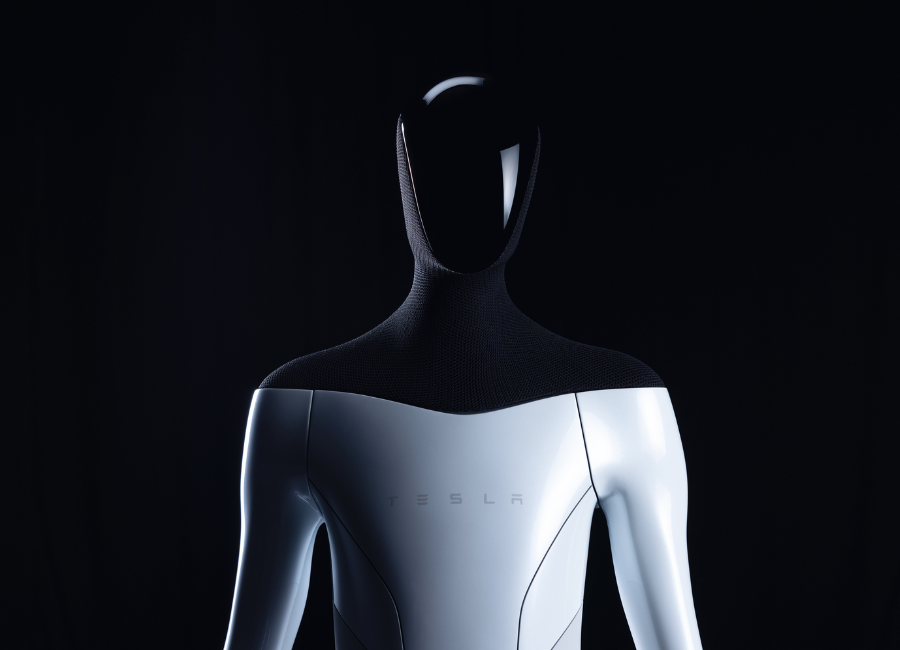In 2021, when Tesla initially introduced its humanoid robot concept, Optimus, it was essentially a human inside a robot suit. However, in 2022, Elon Musk, Tesla’s founder and CEO, revealed two real humanoid robot prototypes.
The first prototype, Bumble C, made its way across the stage at Tesla AI Day 2022, appearing cautious, almost as if trying not to disturb a sleeping baby. Musk acknowledged that it was the first time Bumble C walked untethered, highlighting that the robot had additional capabilities not showcased on stage to avoid any risk of it falling.
The star of the event, however, was Optimus, presented for the first time with a design reminiscent of a modern take on a medieval knight. Although unable to walk independently, Optimus was wheeled onto the stage, where it waved to the audience and performed a brief dance move while supported on a stand. Musk described the prototype as “fairly close” to what would be produced, emphasizing its future potential to assist millions of people in various tasks.

Optimus is a humanoid robot designed by Tesla, with Musk stating that it will be mass-produced and cost less than a car. While Musk hinted at its expected availability between 2025 and 2027, details about the robot’s release remain limited. The humanoid robot is inspired by the human body, featuring arms, hands, legs, and a head. It incorporates a central computer in its torso, a 2.3-kilowatt-hour battery pack, and 28 structural actuators enabling movement.
Optimus has a hand with six actuators and 11 degrees of freedom, allowing for both wide and precise adaptive grasps of objects. Sensors and position encoders in the joints aid in identifying objects and understanding hand positioning. The hands can carry a 20-pound bag, and metallic tendons enhance finger strength. While some experts found the hand design basic, the robot’s ability to recognize its surroundings, walk forward, and perform various tasks demonstrated its potential.
On the software side, Optimus’s central computer processes vision data from multiple sensors to perceive its surroundings. It incorporates a visual navigation system managed by fully trained neural networks and a library of natural motion references, allowing it to adapt to real-world motion. However, challenges may arise in adapting to changes in unstructured environments, according to experts.
Optimus demonstrated the ability to walk forward, self-calibrate its limbs, move them in various directions, and place its body into different poses. It could pick up, sort, and make corrective adjustments to hand-held objects and recognize environments. Despite its capabilities, Tesla’s director of engineering, Milan Kovac, acknowledged that the robot is still far from being fully useful.
The hope is that Optimus will eventually perform tasks like climbing stairs, picking up boxes, using tools, and more. Tesla plans to pilot a use case program for Optimus in one of its production facilities, starting with tasks alongside humans in factories.
While Musk previously mentioned tasks like mowing lawns and doing dishes, the immediate focus seems to be on industrial applications. Optimus is expected to interact with humans, with potential natural language processing to enhance user-friendliness and facilitate communication with humans. Despite its progress, the robot appears to be a work in progress, with ongoing efforts to improve its functionality and usefulness.



